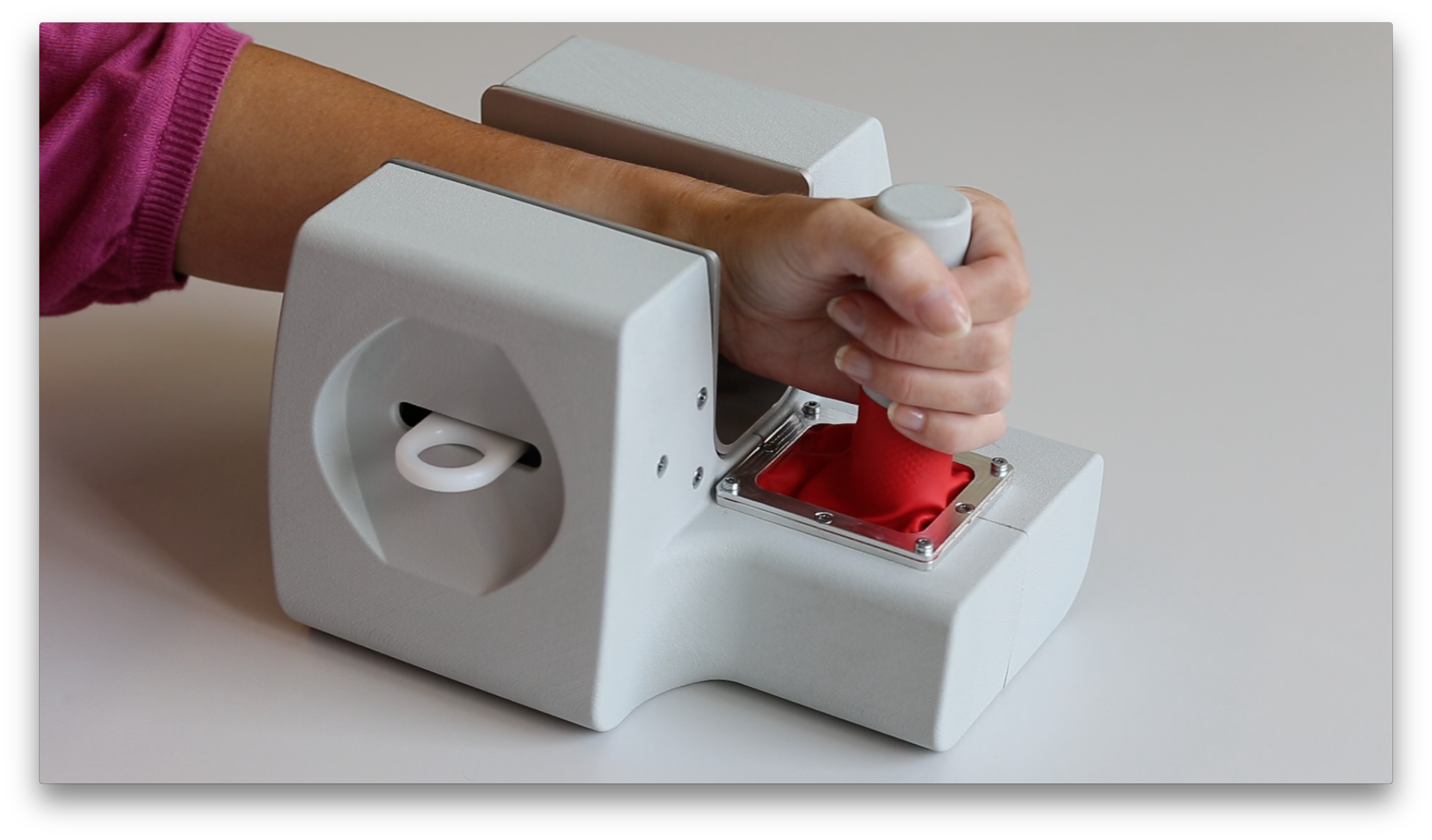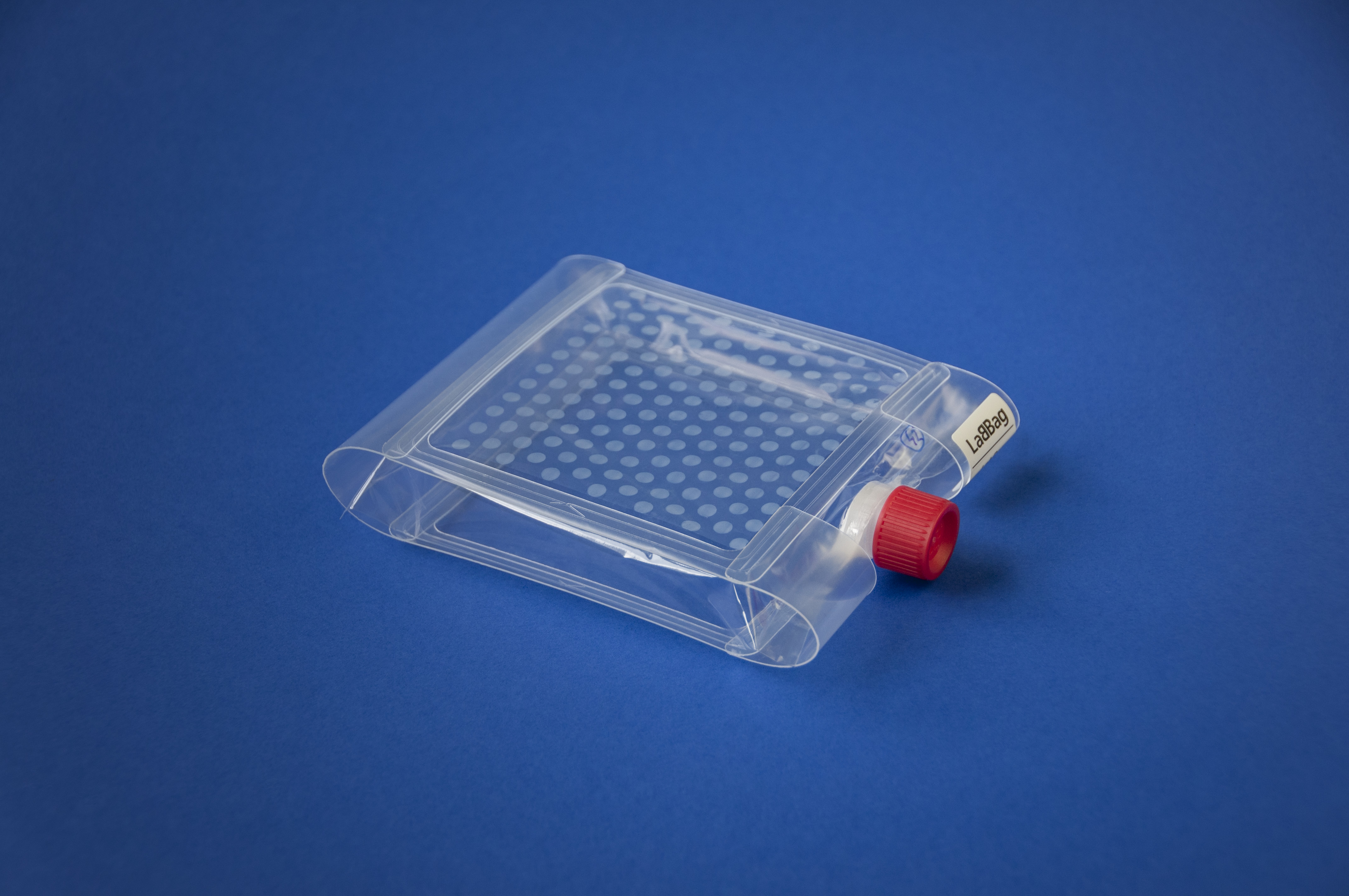MEDICA 2017
Fraunhofer-Institut für Biomedizinische Technik IBMT exhibits future at MEDICA 2017
Medical technology, biotechnology and laboratories - The Fraunhofer IBMT exhibits at the world's leading trade fair for the medical sector MEDICA 2017 from 13 to 16 November 2017 in Düsseldorf in Hall 10, exhibition stand G05: Smartphone-compatible ultrasound hand scanner, Augmented Reality in medicine, modular toxicity and drug analysis platform, LabBag® - low-cost 3D cell culture.


Battle against human trafficking: Fraunhofer IBMT and partners exhibits portable, smartphone-compatible ultrasound scanner that can identify underage victims
Human trafficking, especially for the purposes of sex slavery, is a problem of international dimensions, even today. The victims are often underage girls and boys who are smuggled through border controls with fake ID papers that hide their real age. Having a technological solution capable of identifying such cases of fraudulent identity, for example at the borders of the European Union (EU), would do much to widen the scope for action by the authorities and help stop human trafficking. As part of the multidisciplinary PRIMSA research project, which develops prevention and intervention strategies to stop sex trafficking, Fraunhofer IBMT has developed a portable, handheld
ultrasound scanning device to quickly identify underage victims of human trafficking.
more………in Hall 10 Exhibition stand G05
Predicting the behavior of nanomaterials in the body: Fraunhofer IBMT presents a multimodular screening platform for the safety assessment of new materials and active ingredients
Nanomaterials have been part of the everyday life of our modern society for a long time. However, new applications with steadily increasing production volumes also lead to an increased exposure of humans and the environment. A prediction of the behavior of the nanomaterials in the organism is currently difficult, because of the lack of technologies. In order to better answer the question of the effects of ultra-small particles on the human organism, the Fraunhofer IBMT is developing a modular microfluidic multiorgan platform within the framework of the international multi¬disciplinary EU project "HISENTS: High Level Integrated Sensor for Nanotoxicity Screening" for the safe evaluation of nano effects in the body. The multimodular platform simulates the path of substances through the human body and serves the safety assessment of nanomaterials, chemicals and active substances.
more………in Hall 10 Exhibition stand G05
Growing human stem cells - Laboratory in a bag
Human stem cells are considered a major new hope in the field of medicine. In the future, it is expected that they will make it possible to treat a wide range of ailments such as neurodegenerative diseases. With LabBag®, Fraunhofer researchers have developed an all-in-one system in the form of a transparent bag that provides a cheap, fast and sterile way for scientists to grow, differentiate and freeze stem cells. The cell models produced can be used for toxicity tests and drug development. Having successfully tested the system, researchers will present a prototype at the MEDICA trade fair in Düsseldorf, Germany, from November 13 to 16.
Scientists across the globe are looking for ways to heal diseases using stem cells. These cells offer the potential to develop new types of therapies and drugs. Stem cell material also holds the key to researching diseases in a way that was not possible before. If researchers are to achieve meaningful and transferable results, there must be an increase in the cell material to be examined. In addition, the latest studies show that 3D cell models reflect the conditions in the human body much more accurately. The generation of these cell aggregates takes place primarily under sterile conditions in droplet-shaped nutrient solutions. In the future, it will be possible to complete this process cheaply and reliably. As part of the LabBag® project, the Fraunhofer Institute for Biomedical Engineering IBMT, the Fraunhofer Institute for Surface Engineering and Thin Films IST, and the Fraunhofer Institute for Process Engineering and Packaging IVV have pooled their expertise to develop a miniature laboratory in the form of a plastic bag. Inside this bag, human induced pluripotent stem cells (see box) – in other words, artificially produced stem cells – are able both to grow and to form 3D aggregates in a sterile environment. These cells can be used by the pharmaceutical industry as patient- or disease-specific test systems for drug development and research into active ingredients.
more………in Hall 10 Exhibition stand G05
Health 4.0: New Augmented Reality applications in medicine and the biolaboratory
The computer-assisted expansion of the perception of reality has been boosted by a new generation of mixed-reality glasses. The Fraunhofer Institute for Biomedical Engineering IBMT demonstrates with innovative AR demonstrators, where useful applications are in medicine and in the laboratory:
• The holographic patient record shows ultrasound and MRI data as manipulable, three-dimensional virtual objects in real space and displays vital data from wearables for monitoring the patient.
• Hands free in the biolaboratory: Data glasses support manual workflows with samples by scanning their barcodes and providing sample information.
• AR therapies for the treatment of anxiety disorders: In the BMBF project "DigiPhobie", a biofeedback-assisted AR-therapy system for spider phobias is being developed.
more………in Hall 10 Exhibition stand G05